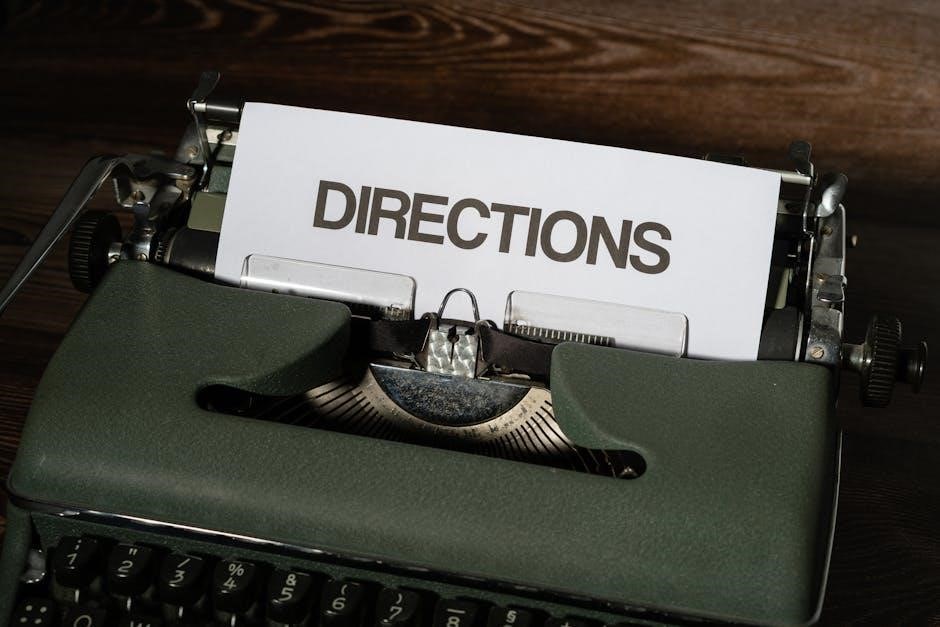Dr. Vodder’s Manual Lymph Drainage (MLD) is a groundbreaking technique developed in the 1930s by Dr. Emil and Estrid Vodder. This gentle, non-invasive method stimulates lymph flow, aiding in detoxification, reducing swelling, and promoting overall well-being. It has become a cornerstone of holistic therapy, widely used by therapists and healthcare professionals to address lymphedema, inflammation, and post-surgical recovery, among other conditions.
1.1 What is Manual Lymph Drainage (MLD)?
Manual Lymph Drainage (MLD) is a gentle, non-invasive manual therapy that stimulates the lymphatic system to enhance lymph flow. Developed by Dr. Emil and Estrid Vodder, it involves light, rhythmic strokes that guide lymph fluid through the body, promoting detoxification and reducing swelling; MLD is particularly effective in managing lymphedema, improving circulation, and supporting immune function. It is widely used in therapeutic and clinical settings to address various health conditions, including post-surgical recovery and chronic inflammation. The technique is characterized by its subtle, precise movements, which make it suitable for sensitive or compromised tissues. MLD has gained recognition for its holistic benefits, making it a valuable tool in both preventive and restorative healthcare practices.
1.2 The History and Development of MLD
Manual Lymph Drainage (MLD) was pioneered in the 1930s by Dr. Emil Vodder and his wife, Estrid, in France. They developed this technique after observing the impact of manual techniques on lymph flow and swelling. Initially used for detoxification and immune support, MLD gained popularity for its effectiveness in treating lymphedema and other lymphatic disorders. Over the years, the Vodders refined their method, creating a system of gentle, rhythmic strokes that stimulate lymphatic vessels. Their work laid the foundation for modern MLD, which has become a widely recognized and respected therapy worldwide, embraced by therapists, medical professionals, and patients alike for its gentle yet powerful approach to enhancing lymphatic health.
1.3 The Role of Dr. Emil and Estrid Vodder in MLD
Dr. Emil Vodder and his wife, Estrid, pioneered Manual Lymph Drainage (MLD) in the 1930s, revolutionizing lymphatic therapy. Their groundbreaking work laid the foundation for modern MLD, emphasizing gentle, manual techniques to stimulate lymph flow. Dr. Vodder, a Danish physician, observed the connection between lymphatic dysfunction and health issues, leading him to develop this innovative approach. Estrid, his collaborator, played a crucial role in refining the method, ensuring its practical application. Together, they established MLD as a cornerstone of lymphatic care, benefiting countless individuals worldwide. Their contributions remain integral to the therapy’s success, making them revered figures in the field of lymphology and holistic health.

The Science Behind Manual Lymph Drainage
Manual Lymph Drainage (MLD) is based on the lymphatic system’s anatomy and physiology, utilizing gentle, rhythmic strokes to enhance lymph flow, aiding detoxification and immune support.
2.1 Anatomy of the Lymphatic System
The lymphatic system is a network of lymph nodes, vessels, and ducts that transport lymph fluid throughout the body. Lymph nodes act as filters, trapping pathogens and debris, while lymph vessels, aided by muscle contractions and valves, move lymph toward the heart. The system converges into two main lymph ducts: the thoracic duct and the right lymphatic duct, which drain into the bloodstream. This intricate anatomy ensures proper fluid balance, immune defense, and detoxification. Understanding this structure is crucial for Manual Lymph Drainage (MLD), as it targets these specific pathways to enhance lymph flow and overall health.
2.2 Physiology of Lymph Flow and Drainage
Lymph flow is a vital process that maintains fluid balance, supports immune function, and removes toxins. It relies on intrinsic contractions of lymph vessels and external forces like muscle movement. Lymph fluid circulates through a network of vessels equipped with one-way valves, ensuring unidirectional flow toward lymph nodes and ultimately into the bloodstream. This system operates under low pressure, with flow rates influenced by physical activity and manual techniques like MLD. Efficient lymph drainage is essential for preventing swelling and maintaining overall health, as it ensures proper filtration and detoxification processes. Understanding this physiology is key to applying Dr. Vodder’s method effectively, enhancing natural lymphatic function for therapeutic benefits.
2.3 The Mechanism of MLD in Enhancing Lymphatic Flow
MLD enhances lymphatic flow through gentle, rhythmic strokes that create a manual pressure gradient, guiding lymph fluid toward the heart and major lymph nodes. These strokes mimic the natural contractions of lymph vessels, stimulating valve openings to ensure unidirectional flow. The technique targets lymphangions, the functional units of lymph vessels, increasing their contraction frequency and efficiency. This promotes detoxification and immune support by improving lymph circulation. Unlike mechanical methods, MLD works in harmony with the body’s natural mechanisms, making it a safe and effective approach for conditions like lymphedema and post-surgical swelling. The scientific basis and clinical success of MLD highlight its role in modern therapeutic practices.
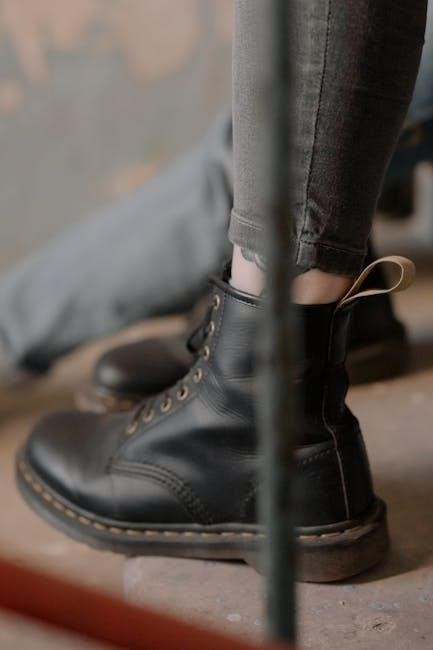
Practical Applications of Dr. Vodder’s MLD
Dr. Vodder’s MLD is widely applied in managing lymphedema, enhancing post-surgical recovery, and aiding detoxification. It is also used in spas for promoting relaxation and overall wellness.
3.1 Step-by-Step Techniques for Performing MLD
MLD begins with gentle, light strokes to prepare the skin, often using oil or lotion. Practitioners use rhythmic, wave-like movements to guide lymph toward lymph nodes. Starting at the neck, strokes clear the central lymph ducts before addressing affected areas. Techniques like “stationary circles” and “pump” methods direct lymph flow. Sessions typically last 40-60 minutes, focusing on specific regions. For post-surgical cases, 5-6 sessions, 24-48 hours apart, are recommended. The method emphasizes gentle pressure to avoid damaging lymph vessels, ensuring effective drainage without discomfort. Proper training is essential to master these techniques and tailor them to individual needs, enhancing therapeutic outcomes and patient comfort.
3.2 Indications for MLD: When and Why It Is Used
Manual Lymph Drainage (MLD) is a versatile therapy with a wide range of applications. It is primarily used to manage lymphedema, reduce post-surgical swelling, and enhance detoxification by stimulating lymph flow. MLD is also beneficial for promoting relaxation, improving circulation, and supporting the immune system. It is often recommended for individuals with chronic inflammation, fatigue, or bloating. In oncology, MLD is used to prevent secondary lymphedema after breast cancer treatment. Additionally, it aids in reducing scar tissue and supporting the body’s natural healing processes. The gentle, non-invasive nature of MLD makes it suitable for diverse patient populations, including those with sensitive conditions or chronic illnesses, ensuring effective and safe therapeutic outcomes.
3.3 Contraindications and Precautions for MLD
While Manual Lymph Drainage (MLD) is generally safe, it is not suitable for everyone. Contraindications include acute infections, active cancer, or severe circulatory issues, as MLD may worsen these conditions. Caution is advised for individuals with heart failure, as increased lymph flow can overload the cardiovascular system. MLD should also be avoided during acute inflammation or in areas with open wounds. Pregnant women and those with a history of deep vein thrombosis require careful assessment before treatment. Additionally, MLD should not be performed directly over tumors or fragile tissues. It is essential to consult a certified practitioner to ensure safe and effective application, especially for high-risk patients or those with complex medical histories.
3.4 Combining MLD with Other Therapies for Optimal Results
Manual Lymph Drainage (MLD) is often combined with other therapies to enhance its effectiveness. Compression therapy, exercise, and skincare are commonly integrated with MLD to manage lymphedema and promote healing. MLD can also be paired with physical therapy to improve mobility and reduce inflammation. Additionally, some practitioners incorporate MLD into holistic wellness programs, including massage, acupuncture, and nutritional counseling, to address both physical and emotional well-being. This multi-faceted approach ensures a comprehensive treatment plan tailored to individual needs, maximizing the benefits of MLD and supporting overall recovery and health. Combining therapies can lead to faster and more sustainable results, especially in chronic conditions like lymphedema.
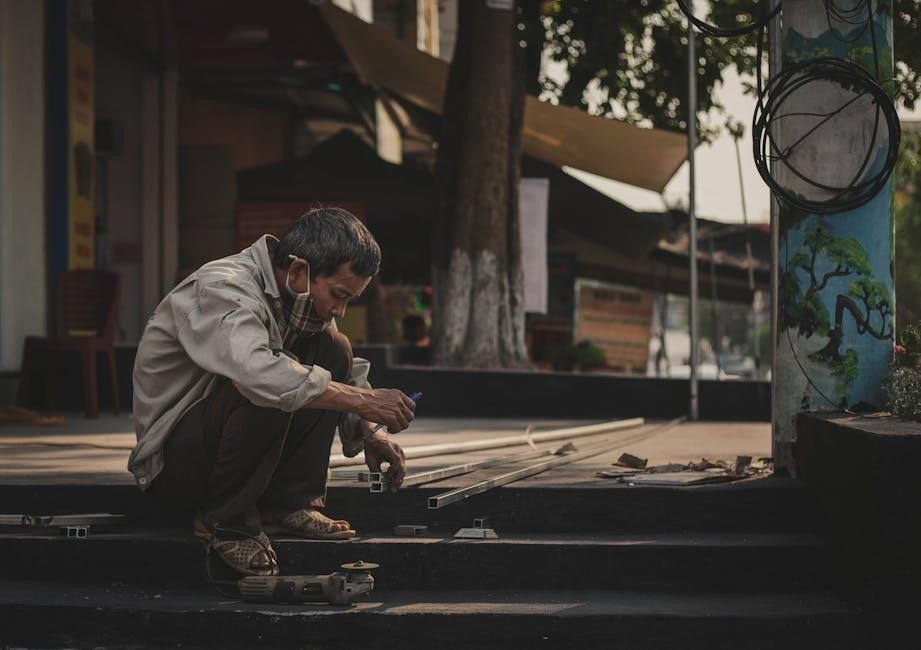
Benefits and Effectiveness of MLD
MLD effectively reduces swelling, enhances detoxification, improves circulation, and promotes relaxation. It supports immune function, alleviates inflammation, and offers long-term benefits for lymphatic health and well-being.
4.1 Reducing Swelling and Managing Lymphedema
Manual Lymph Drainage (MLD) is highly effective in reducing swelling and managing lymphedema by gently stimulating lymphatic vessels to enhance fluid circulation. This technique, developed by Dr. Emil and Estrid Vodder, uses light, rhythmic strokes to guide lymph toward functioning lymph nodes, alleviating congestion in affected areas. Studies have shown that MLD significantly reduces limb swelling in patients with lymphedema, particularly when combined with compression therapy and exercise. By promoting proper lymphatic drainage, MLD helps prevent the progression of lymphedema and improves overall comfort and mobility. Regular MLD sessions can also reduce the risk of secondary complications, such as infections, making it a cornerstone of lymphedema management.
4.2 Enhancing Detoxification and Immune Support
Manual Lymph Drainage (MLD) plays a vital role in enhancing detoxification by stimulating the lymphatic system, which is responsible for removing toxins and pathogens from the body. By promoting lymph flow, MLD helps eliminate metabolic waste, reducing the burden on the immune system. This gentle technique supports immune function by ensuring lymph nodes and vessels operate efficiently, enabling the body to fight infections and maintain overall health. MLD also complements other detoxification practices, such as skin care and nutrition, by optimizing lymphatic clearance. Regular sessions can lead to improved energy levels and a stronger immune response, making it a valuable tool for holistic well-being.
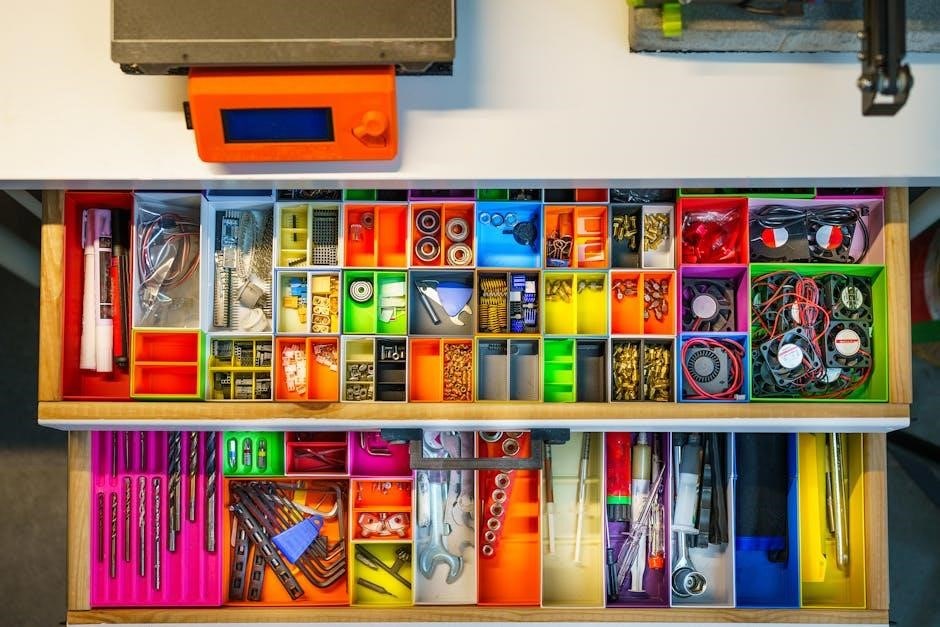
4.3 Improving Circulation and Reducing Inflammation
Dr. Vodder’s Manual Lymph Drainage (MLD) significantly improves circulation by enhancing the flow of lymph, which plays a crucial role in maintaining healthy blood circulation. By gently stimulating the lymphatic vessels, MLD helps reduce venous pressure and promotes the removal of proteins and excess fluids that can lead to inflammation. This technique is particularly effective in reducing localized inflammation, as it aids in the elimination of pro-inflammatory substances. Regular MLD sessions can enhance overall circulatory health, benefiting conditions like chronic inflammation and edema. Its non-invasive nature makes it an ideal complement to other therapies, further emphasizing its role in supporting the body’s natural healing processes and improving vascular function.
4.4 Promoting Relaxation and Overall Well-Being
The gentle, rhythmic strokes of Dr. Vodder’s MLD technique create a soothing experience, promoting deep relaxation and reducing stress. By enhancing lymphatic flow, MLD helps eliminate toxins, which can improve overall well-being. Many patients report feeling calmer and more refreshed after sessions, as the technique also reduces muscle tension and promotes better sleep. This holistic approach not only addresses physical discomfort but also supports emotional balance, enhancing mental clarity and overall vitality, making it a valuable tool for maintaining long-term health and well-being.
4.5 Case Studies and Success Stories
Dr. Vodder’s MLD has transformed lives through numerous case studies. A patient with severe lymphedema experienced significant swelling reduction after regular sessions, improving mobility and quality of life. Another individual, post-breast cancer surgery, used MLD to prevent secondary lymphedema, showcasing its preventive potential. These success stories highlight MLD’s effectiveness in managing chronic conditions and enhancing well-being, demonstrating its value as a therapeutic approach in modern healthcare.
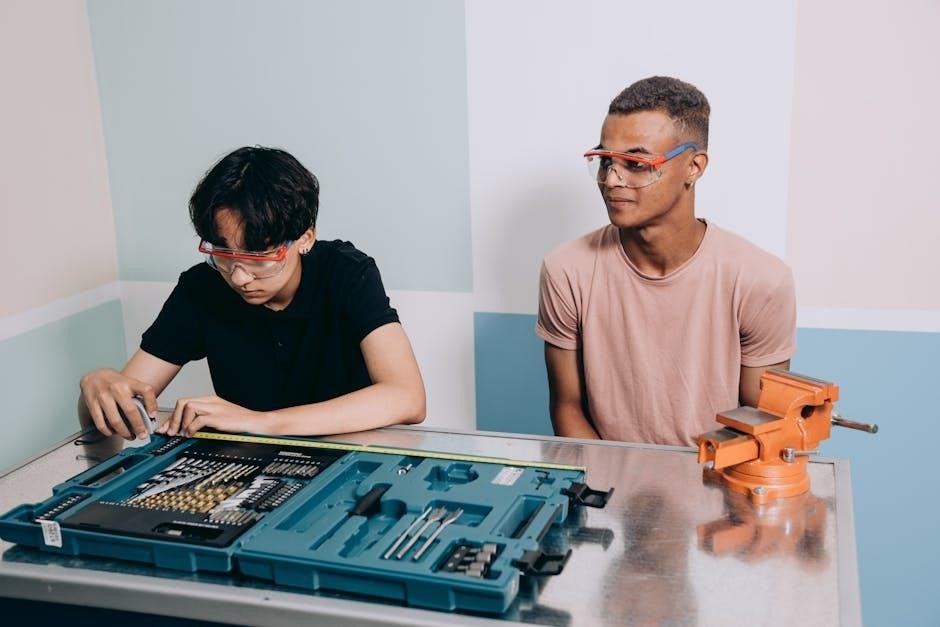
Training and Certification in Dr. Vodder’s Method
The Vodder School offers comprehensive training in Dr. Vodder’s MLD, requiring both theoretical and practical mastery. Certification demands rigorous coursework, hands-on practice, and continuing education for expertise.
5.1 The Vodder School and Its Curriculum
The Vodder School, established by Dr. Emil and Estrid Vodder, offers a comprehensive curriculum focused on Manual Lymph Drainage (MLD). The program includes in-depth study of lymphatic anatomy, physiology, and the Vodder technique. Students learn gentle manual techniques to stimulate lymph flow, reduce swelling, and enhance detoxification. Practical training involves hands-on sessions, case studies, and clinical practice under supervision. The curriculum emphasizes proper application of MLD for various conditions, including lymphedema and post-surgical recovery. The school also provides theoretical foundations, ensuring a thorough understanding of the lymphatic system and its role in health. This holistic approach prepares practitioners to integrate MLD into diverse therapeutic settings effectively.
5.2 Requirements for Becoming a Certified MLD Practitioner
To become a certified MLD practitioner, one must complete the Vodder School’s rigorous training program. Prerequisites include a background in healthcare, massage therapy, or a related field. The curriculum involves both theoretical and practical training, focusing on lymphatic anatomy, physiology, and the Vodder technique. Students must demonstrate proficiency in manual lymph drainage through hands-on sessions and clinical practice. A final theory exam ensures comprehensive understanding; Certification is awarded upon successful completion, enabling practitioners to apply MLD effectively in various therapeutic settings. Continuing education is also required to maintain certification and stay updated on advancements in the field. This ensures high standards of practice and patient care.
5.3 Continuing Education and Professional Development
Continuing education is essential for MLD practitioners to refine their skills and stay updated on the latest advancements. The Vodder School offers workshops, online courses, and hands-on training to deepen practitioners’ understanding of the technique. Professional development opportunities include attending conferences, webinars, and case study discussions. Additionally, collaborating with other healthcare professionals fosters a network of knowledge sharing and best practices. Regular recertification ensures that practitioners maintain high standards and adapt to evolving methodologies. By committing to lifelong learning, MLD therapists can enhance their expertise, providing optimal care for clients and advancing the field of lymphatic therapy. This dedication ensures the Vodder method remains effective and widely respected.
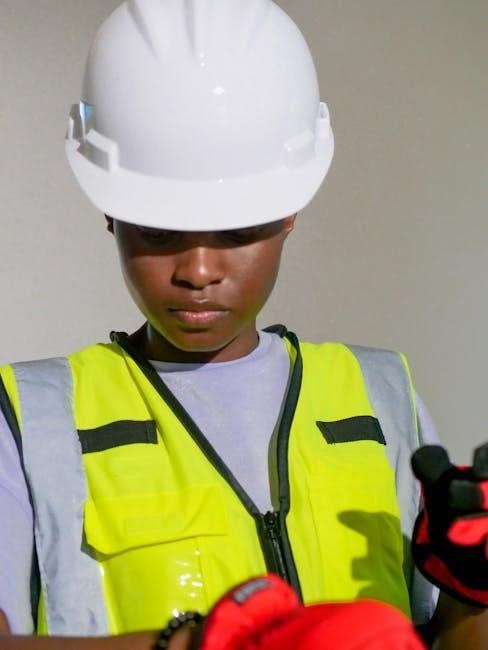
Tools and Resources for MLD Practitioners
Essential tools include high-quality massage oils and gloves. Recommended literature covers detailed manuals and anatomical guides. Online platforms offer tutorials, forums, and updated research for continuous learning and skill refinement.
6.1 Essential Equipment for Performing MLD
The primary tools for MLD include soft, non-latex gloves to ensure gentle and hygienic contact with the skin. High-quality massage oils or lotions are used to reduce friction during manual techniques. A comfortable, ergonomic table or surface is essential for proper client positioning. Practitioners often use towels or drapes for hygiene and client comfort. Additional tools may include anatomical charts or diagrams to guide precise lymph node targeting. Portable massage tables are ideal for home visits, while creams or gels with soothing properties can enhance the session experience. Proper lighting and a calm environment further optimize the treatment setup.
6.2 Recommended Reading and Reference Materials
For a deep understanding of MLD, essential reading includes Dr. Emil Vodder’s original works and modern textbooks. Key resources are Manual Lymph Drainage: A Practical Guide by Hildegard Wittlinger and Textbook of Dr. Vodder’s Manual Lymph Drainage by Ingeborg M. Kellner. The third edition of Manual Lymph Drainage by Elsevier provides updated techniques and applications. Journals like Lymphology offer scientific insights and case studies. Online platforms and DVDs, such as those by the Vodder School, supplement theoretical knowledge with visual demonstrations. These materials are indispensable for practitioners, ensuring mastery of Dr. Vodder’s method and its integration into modern therapeutic practices.
6.3 Online Courses and Tutorials for Skill Enhancement
Online courses and tutorials are excellent resources for mastering Dr. Vodder’s MLD techniques. The Vodder School offers comprehensive virtual training programs, combining theoretical knowledge with practical demonstrations. Platforms like the MLD Institute provide certified courses, while websites such as Lymphatic Network host webinars and workshops. These resources often include video tutorials, interactive modules, and downloadable materials to enhance learning. Additionally, online communities and forums allow practitioners to share experiences and gain insights. Continuing education courses ensure professionals stay updated on the latest advancements and refine their skills. These digital tools are invaluable for both beginners and experienced therapists seeking to deepen their expertise in Dr. Vodder’s method.
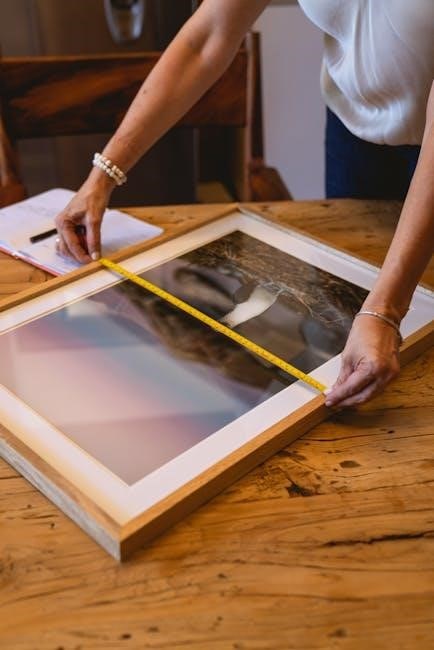
Common Questions and Answers About MLD
This section addresses frequently asked questions about MLD, such as its effectiveness, duration of sessions, and whether it can be self-administered, providing clear and concise answers.
7.1 Is MLD Painful?
Manual Lymph Drainage (MLD) is generally not painful due to its gentle, light, and rhythmic strokes. The technique involves applying subtle pressure to stimulate lymph flow without causing discomfort. Many patients describe the experience as soothing and relaxing. Since the lymph vessels are located just beneath the skin, the movements are soft and non-invasive. This makes MLD suitable for individuals with sensitive skin or those recovering from surgeries. The focus is on promoting lymphatic circulation rather than deep tissue manipulation, ensuring a pain-free experience. Overall, MLD is renowned for its comfort and therapeutic benefits, making it accessible to a wide range of clients seeking lymphatic support.
7.2 How Long Does a Typical MLD Session Last?
A typical Manual Lymph Drainage (MLD) session duration varies depending on the client’s condition and treatment goals. Generally, sessions range from 30 to 90 minutes. Initial sessions may be longer to allow for a full assessment and treatment plan. For individuals with lymphedema or post-surgical swelling, sessions might focus on specific areas, lasting around 45–60 minutes. The therapist tailors the session length to address the client’s needs effectively. Factors such as the severity of swelling, number of regions treated, and overall health of the lymphatic system influence the duration. Regular maintenance sessions are often shorter, typically 30–45 minutes, to support ongoing lymphatic health and well-being.
7.3 Can MLD Be Self-Administered?
Manual Lymph Drainage (MLD) is typically performed by a certified practitioner, as proper technique is essential for effectiveness. However, individuals can learn basic self-administered techniques for maintenance or mild swelling. These techniques are simpler and focus on stimulating lymph flow in specific areas. It’s important to receive guidance from a trained therapist to ensure safety and efficacy. Improper techniques can potentially worsen swelling or cause discomfort. Self-administered MLD is not a replacement for professional therapy but can complement treatments as part of a home care routine. Always consult a certified MLD practitioner to learn appropriate methods and avoid complications.
7.4 How Soon Can Results Be Expected?
Results from Manual Lymph Drainage (MLD) can vary depending on the individual and the condition being treated. Some people may notice improvements, such as reduced swelling or enhanced relaxation, after the first session. For others, it may take several treatments to experience noticeable benefits. Consistency is key, as lymphatic function often improves gradually with regular therapy. In cases of chronic conditions like lymphedema, sustained effort is required to manage symptoms effectively. Generally, patients can expect to see measurable changes within 2-6 sessions, but full outcomes may take weeks or months of continuous treatment. Always consult a certified MLD practitioner for personalized guidance and realistic expectations.
Dr. Vodder’s MLD remains a cornerstone of lymphatic therapy, with growing recognition in healthcare. The Vodder School continues to lead in education and innovation, ensuring MLD’s evolution. Future directions include expanded research, integration with modern therapies, and increased global awareness to solidify its role in holistic and medical treatments.
8.1 The Evolution of MLD in Modern Therapy
Dr. Vodder’s Manual Lymph Drainage has evolved significantly since its inception in the 1930s. Initially developed for lymphedema, MLD is now integral to modern therapy, addressing diverse conditions like inflammation, detoxification, and post-surgical recovery. Advances in research and understanding of lymphatic physiology have refined techniques, enhancing efficacy. The integration of MLD with other therapies, such as compression and exercise, has broadened its applications. Today, it is widely recognized in medical and spa settings, underscoring its versatility and therapeutic benefits. Continued research and education by the Vodder School ensure MLD remains a dynamic, evidence-based practice, adapting to contemporary healthcare needs while staying true to its foundational principles.
8.2 The Growing Recognition of MLD in Healthcare
Manual Lymph Drainage (MLD) is gaining increasing recognition in healthcare due to its proven benefits and versatility. Originally developed by Dr. Emil and Estrid Vodder, MLD has transitioned from a niche therapy to a widely accepted treatment for lymphedema, inflammation, and post-surgical recovery. Its non-invasive nature and holistic approach align with modern healthcare’s focus on patient-centered care. Research and clinical outcomes have solidified its role in managing lymphatic disorders, leading to its integration into hospitals, clinics, and rehabilitation centers. The Vodder School’s rigorous training and certification programs have further elevated its credibility, making MLD a trusted modality for healthcare professionals worldwide. This growing acceptance underscores its importance in contemporary therapeutic practices.
8.3 Encouraging Further Research and Awareness
Advancing research and awareness of Manual Lymph Drainage (MLD) is crucial for its continued evolution and acceptance in healthcare. While studies have shown its efficacy in managing lymphedema and reducing inflammation, further investigation is needed to explore its potential in addressing other conditions. Raising awareness among healthcare professionals and the public can expand its applications and accessibility. Educational campaigns, workshops, and collaborations between researchers and clinicians are essential to promote MLD’s benefits. By fostering a deeper understanding and validating its effectiveness through robust research, MLD can become a cornerstone of integrative medicine, offering relief and improved quality of life to a broader population.

Additional Resources and References
Explore recommended books like Manual Lymph Drainage and Textbook of Dr. Vodder’s Manual Lymph Drainage. Visit websites like lymphaticnetwork.org for expert insights and vodderschool.com for training details. Professional organizations such as the Lymphology Association of North America (LANA) and the International Society of Lymphology (ISL) offer networking and educational resources.
9.1 Recommended Books and Journals
For deeper understanding, explore Manual Lymph Drainage (3rd ed.) by Elsevier, detailing MLD techniques and applications. Another essential read is Textbook of Dr. Vodder’s Manual Lymph Drainage by I. Kurz, offering comprehensive insights into the Vodder method. The Journal of Lymphology provides cutting-edge research on lymphatic health and therapy. These resources are invaluable for practitioners and students seeking to master Dr. Vodder’s approach and stay updated on the latest advancements in lymphatic care.
9.2 Websites and Online Communities for MLD Practitioners
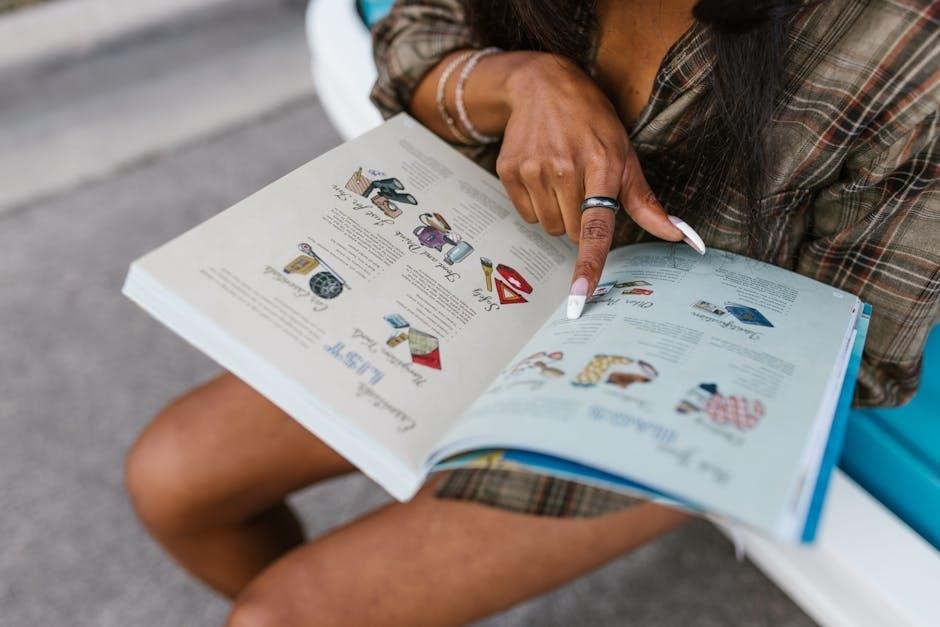
Several websites and online communities provide valuable resources for MLD practitioners. The Vodder School website offers comprehensive training materials, certification programs, and updates on Dr. Vodder’s method. The Lymphatic Network is another excellent resource, featuring articles, webinars, and forums for professionals. Additionally, the National Lymphedema Network provides insights into lymphedema management and MLD techniques. Online forums like MLD Forum allow practitioners to share experiences, ask questions, and stay connected with peers. These platforms are essential for continuous learning and professional growth in the field of Manual Lymph Drainage.
9.3 Professional Organizations and Networking Opportunities
Professional organizations and networking opportunities play a vital role in advancing MLD practice. The Vodder School is a leading institution, offering certification and training in Dr. Vodder’s method. The National Lymphedema Network (NLN) and the European Society of Lymphology provide platforms for practitioners to connect, share knowledge, and access resources. Conferences like the International Lymphoedema Conference offer opportunities to learn from experts and network with peers. These organizations also advocate for MLD’s recognition and integration into healthcare systems, fostering collaboration and innovation in the field. Engaging with these groups ensures practitioners stay updated on best practices and contribute to the global MLD community.
